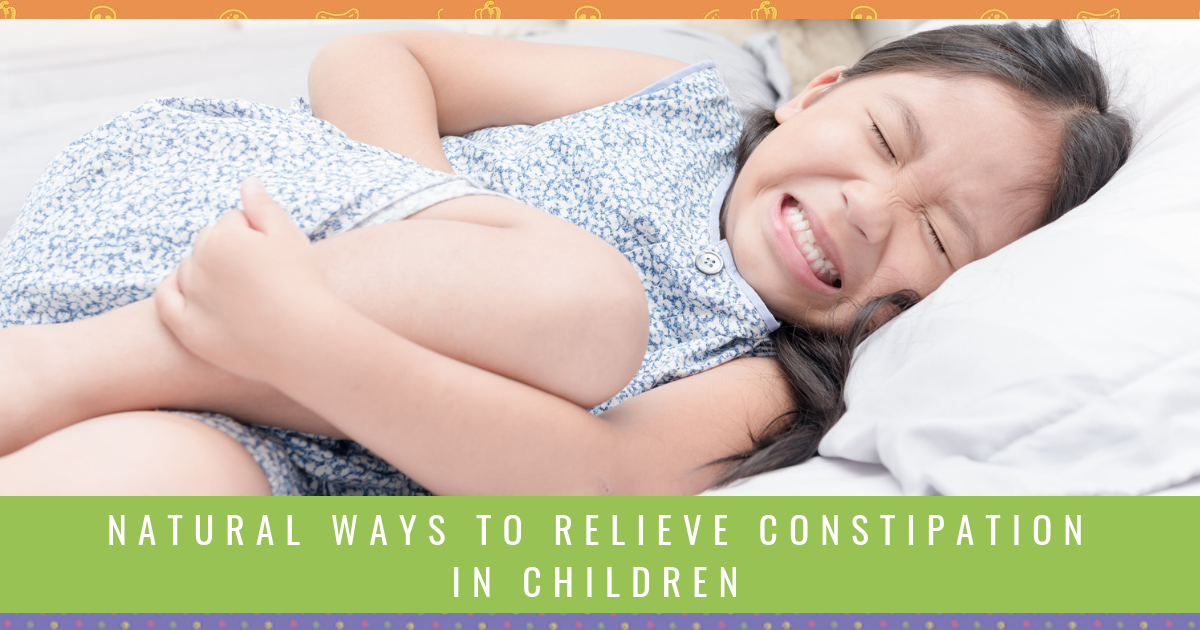Explore effective tips and tricks for managing constipation in children, offering relief and comfort to worried parents. Learn about recognizing symptoms, home remedies, and when to seek medical advice for your child’s constipation.
Table of Contents
Introduction
Constipation in children is a common and often stressful concern for many parents. Watching your child struggle with the discomfort and potential health issues related to constipation can be heart-wrenching. This comprehensive guide aims to arm you with knowledge, tips, and practical advice to help your little one find relief.
Understanding Constipation in Children
What is Constipation?
Constipation in children refers to a decrease in the frequency of bowel movements, accompanied by the passage of hard, dry stools. The condition is characterized not just by the number of bowel movements, but also by the effort required to expel the stool and the consistency of the stool itself. In general, if a child has fewer than three bowel movements per week, they might be considered constipated.
Common Causes of Constipation in Children
There are several factors that can contribute to constipation in children:
- Dietary Factors: A diet low in fiber, inadequate fluid intake, or both can lead to constipation. Fiber is essential in the diet as it helps to bulk up the stool and stimulate bowel movements, while fluids help to keep the stool soft.
- Lack of Physical Activity: Regular physical activity helps stimulate intestinal movements, which in turn help to move stools through the digestive system.
- Toilet Training Issues: Sometimes, children may resist having bowel movements due to stressful toilet training experiences or because they do not want to interrupt playtime. This resistance can lead to constipation.
- Changes in Routine: Any changes in a child’s routine, such as travel, hot weather, or stress, can affect their bowel movements.
- Holding Back Stool: Children may sometimes hold back stools due to pain from previous hard stools, leading to a cycle of constipation.
- Medications: Certain medications, including some antidepressants and iron supplements, can cause constipation as a side effect.
Recognizing the Signs of Constipation in Children
Identifying constipation early on can help manage the condition more effectively. Common signs include:
- Less frequent bowel movements than usual (less than three times per week).
- Difficulty or straining during bowel movements.
- Hard, dry, or large stools.
- Pain or discomfort during bowel movements.
- Avoidance of going to the bathroom.
- A bloated abdomen or complaints of abdominal pain.
- Traces of liquid or clay-like stool in the child’s underwear — a sign that stool is backed up in the rectum.
Managing and Preventing Constipation
Preventing and managing constipation in children often involves lifestyle and dietary changes:
Managing and Preventing Constipation
Preventing and managing constipation in children often involves lifestyle and dietary changes:
- Increase Fiber Intake: Encourage a diet rich in fruits, vegetables, and whole grains to increase dietary fiber.
- Promote Hydration: Ensure the child drinks plenty of fluids, especially water, to help soften the stool.
- Encourage Regular Physical Activity: Regular exercise can help stimulate normal bowel function.
- Establish a Routine: Encourage regular toilet habits, such as going to the bathroom after meals.
- Educate on Healthy Toilet Habits: Teach children not to hold in their bowel movements and to respond to the body’s natural urges promptly.
When to Seek Medical Advice
While most cases of constipation in children can be resolved with at-home interventions, it’s important to consult a healthcare provider if:
- Constipation lasts for more than two weeks.
- There is blood in the stool.
- The child experiences severe or persistent abdominal pain.
- There are additional concerning symptoms, such as weight loss or vomiting.

Recognizing the Signs of Constipation
Identifying constipation in children can be challenging, as they may not always communicate their discomfort or understand what they are experiencing. However, being vigilant about certain signs can help parents and caregivers recognize constipation early and take steps to alleviate it. Here are key symptoms to watch for:
- Infrequent Bowel Movements: One of the most apparent signs of constipation is fewer bowel movements than usual. For most children, having fewer than three bowel movements a week can indicate constipation.
- Difficulty Passing Stool: If your child appears to be straining a lot or spending a long time on the toilet without success, it may be a sign that they are having difficulty passing stool due to constipation.
- Hard, Dry, or Large Stool: The texture and size of the stool can also indicate constipation. Hard, dry, or particularly large stools can be signs that your child is constipated.
- Pain or Discomfort: Watch for signs of pain or discomfort during bowel movements. Children may express this verbally or show physical signs of distress, such as wincing or holding their stomach.
- Blood on the Surface of the Stool: While not as common, seeing a small amount of blood on the toilet paper or on the surface of the stool can occur if constipation has led to small fissures or tears around the anus.
- Abdominal Pain and Bloating: Constipation can cause abdominal pain, bloating, and a sense of fullness. Your child may complain of stomach aches or seem uncomfortable.
- Nausea and Loss of Appetite: In some cases, constipation can lead to a feeling of nausea or a decrease in appetite, as the digestive tract is not functioning smoothly.
- Reluctance to Use the Bathroom: Children experiencing discomfort during bowel movements might start avoiding the bathroom, which can exacerbate the problem.
- Leakage of Stool or Soiling: In some instances, children with constipation may experience involuntary leakage of stool or soiling in their underwear, known as encopresis. This can happen when liquid stool leaks around the impacted stool.
Home Remedies to Ease Constipation
Constipation, a common issue in children, can often be managed or alleviated with simple home remedies. These remedies focus on natural ways to soften the stool and promote regular bowel movements without the need for medication. Here are some effective strategies to help ease constipation in children:
- Increase Dietary Fiber: Fiber helps to increase the bulk and soften the stool, making it easier to pass. Incorporate high-fiber foods into your child’s diet, such as fruits (like pears, apples with the skin on, and berries), vegetables (like broccoli, carrots, and peas), legumes (beans and lentils), and whole grains (like oatmeal, whole wheat bread, and barley).
- Encourage Plenty of Fluids: Dehydration can make constipation worse, so it’s essential to ensure your child drinks enough fluids throughout the day. Water is the best choice, but milk and small amounts of fruit juices (especially prune juice) can also help hydrate and sometimes stimulate bowel movements.
- Promote Physical Activity: Regular physical activity helps stimulate intestinal activity, which can help move things along the digestive tract. Encourage your child to play outside, participate in sports, or engage in any active play for at least an hour each day.
- Establish a Routine: Setting a regular toilet routine can help encourage regular bowel movements. Encourage your child to sit on the toilet for a few minutes at the same times each day, ideally after meals, to take advantage of the natural reflex that helps move the bowel.
- Warm Baths: A warm bath can relax the muscles and may help your child feel more comfortable when trying to pass stools. This can be particularly useful if your child is experiencing discomfort or pain with bowel movements.
- Abdominal Massage: Gently massaging your child’s abdomen can help stimulate the intestines. Use your fingertips to make circular motions, moving clockwise around the navel. This can help move the stool along and relieve gas and bloating.
- Prune Juice: Prune juice is known for its natural laxative effect due to its high content of fiber and a sugar alcohol called sorbitol, which helps to soften stools and stimulate bowel movements. It can be particularly effective for children who are old enough to safely consume it.
- Limit Dairy Intake: In some children, excessive dairy consumption can contribute to constipation. If your child consumes a lot of milk, cheese, or other dairy products, consider reducing the amount and observing if there’s an improvement in their bowel movements.
- Use of Flaxseed: Ground flaxseed can be a natural laxative because of its high fiber content. You can sprinkle it on cereal or mix it into smoothies to help increase fiber intake subtly.
When to Consult a Healthcare Provider
While constipation in children is often manageable with home remedies and lifestyle adjustments, there are circumstances when consulting a healthcare provider is necessary. Recognizing the signs that indicate a need for professional medical advice can ensure your child receives the appropriate care. Here are situations when you should consider seeking help from a healthcare provider:
- Persistent Constipation: If constipation lasts longer than two weeks despite trying home remedies and dietary changes, it’s time to consult a healthcare provider. Persistent constipation could indicate an underlying condition that needs medical attention.
- Blood in the Stool: Seeing blood in your child’s stool or on toilet paper after wiping could be a sign of tears in the anal region (anal fissures) or other more serious conditions. Always get medical advice to rule out significant issues.
- Severe Pain: If your child experiences severe abdominal pain, rectal pain, or significant discomfort during bowel movements, it’s crucial to seek medical attention. Pain can indicate complications that may require treatment beyond home remedies.
- Changes in Bowel Movements: Sudden changes in the frequency, consistency, or ease of bowel movements that do not improve with home interventions warrant a doctor’s visit. This can include unusually hard stools, very narrow stools, or a noticeable decrease in bowel movement frequency.
- Accompanying Symptoms: Symptoms such as unexplained weight loss, vomiting, fever, or lethargy alongside constipation could be signs of a more serious health issue. These symptoms require immediate medical evaluation.
- Reluctance to Use the Bathroom: If your child is avoiding going to the bathroom due to pain or fear of pain, this can exacerbate constipation and lead to a cycle that is hard to break without professional guidance.
- Ineffectiveness of Over-the-Counter Remedies: If you’ve tried over-the-counter remedies following package directions or pediatrician advice and haven’t seen improvement, it’s time to consult a healthcare provider. They can recommend other treatments or investigate further.
- Signs of Intestinal Blockage: Symptoms such as a swollen abdomen, inability to pass gas, and vomiting, especially when combined with constipation, could indicate an intestinal blockage, a serious condition requiring immediate medical attention.
- Family History of Gastrointestinal Diseases: If there’s a family history of gastrointestinal diseases, such as inflammatory bowel disease, celiac disease, or colorectal cancer, consult a healthcare provider for an evaluation if your child is experiencing constipation.
- Behavioral or Emotional Changes: If constipation is affecting your child’s behavior, mood, or overall well-being, professional advice can be beneficial. Sometimes, constipation is linked to stress or anxiety, and addressing these underlying issues can be part of the solution.
The Role of Routine and Consistency
The role of routine and consistency is fundamental in managing and preventing constipation in children, contributing significantly to their overall digestive health. Establishing a structured daily schedule helps regulate the body’s natural processes, including digestion and bowel movements. Here’s how routine and consistency play a crucial role in this context:
- Regular Meal Times: Consistent meal times help regulate the digestive system. Eating at the same times each day encourages the body to develop a predictable rhythm for digesting food and initiating bowel movements, enhancing regularity.
- Consistent Hydration: Regular and adequate fluid intake is essential for softening stools and promoting their easier passage. Encouraging children to drink water throughout the day, especially after physical activity and with meals, supports healthy digestion.
- Scheduled Toilet Times: Encouraging children to use the bathroom at regular times, particularly after meals, can take advantage of the body’s natural post-meal digestive reflexes. This habit can help children recognize and respond to their body’s cues for bowel movements, reducing the risk of constipation.
- Daily Physical Activity: Regular physical activity stimulates the intestines and can help keep the digestive system active and efficient. Setting aside time each day for exercise or active play can prevent constipation and promote overall health.
- Fiber Intake: A consistent diet rich in fruits, vegetables, whole grains, and legumes provides the necessary fiber to help form soft, bulky stools that are easier to pass. Introducing and maintaining high-fiber foods in every meal can significantly improve bowel regularity.
- Sleep Routine: Adequate and regular sleep is crucial for the body’s overall health, including the digestive system. Establishing a consistent bedtime and ensuring that children get enough rest can positively affect their bowel movements.
- Stress Management: Routine and consistency in daily life can provide a sense of security and reduce stress, which, in turn, positively affects digestive health. Stress and anxiety can often exacerbate or trigger constipation in children.
- Adaptation and Flexibility: While establishing routines is beneficial, being flexible and willing to adjust these routines based on your child’s needs is also important. For example, increasing fluid or fiber intake when needed or adjusting meal and toilet times as children grow and their schedules change.
Tips for Discussing Constipation with Your Child
Discussing constipation with your child can be delicate, but it’s essential for helping them understand their bodies and encouraging them to speak up about health issues. Here are some tips for navigating this conversation effectively and sensitively:
- Use Age-Appropriate Language: Tailor your explanation and the words you use to match your child’s age and level of understanding. Avoid medical jargon. Instead, use simple terms to explain how the digestive system works and what constipation is.
- Normalize the Conversation: Make discussions about bodily functions normal and shame-free. Explain that everyone experiences issues like constipation at times, and it’s a natural part of how our bodies work. This approach can help reduce any embarrassment or fear your child may feel.
- Be Open and Encouraging: Let your child know that they can talk to you about anything, including how their body feels. Encourage them to describe their symptoms without judgment, fostering an environment where they feel safe and understood.
- Educate About Causes and Symptoms: Explain what can cause constipation, such as not eating enough fiber, not drinking enough water, or not being active. Discuss the signs of constipation so they can recognize it and tell you when they’re experiencing it.
- Discuss the Importance of Healthy Habits: Talk about how eating a balanced diet, drinking plenty of water, and being physically active can help prevent constipation. Involve your child in choosing healthy foods and planning physical activities they enjoy.
- Teach Bathroom Habits: Explain the importance of not ignoring the urge to go to the bathroom and taking the time they need without rushing. You can also discuss how sitting on the toilet correctly can help, such as using a footstool to support their feet if they’re small.
- Offer Reassurance: Reassure your child that constipation is common and treatable. Let them know that you’re there to help them feel better and that there are many ways to manage and prevent it.
- Involve Them in Solutions: If your child is old enough, involve them in finding solutions. For example, you could work together to choose high-fiber foods for their meals or plan daily activities. This empowerment can make them more invested in their health.
- Use Visual Aids: Sometimes, pictures or diagrams can help explain where and how constipation happens in the body. Visual aids can make the explanation more understandable and less intimidating for a child.
- Maintain an Ongoing Dialogue: Don’t let the conversation about constipation be a one-time event. Check in with your child regularly about their bowel movements and overall digestive health, making it a regular part of health and wellness discussions in your family.
By approaching the topic with sensitivity, openness, and positivity, you can help your child feel comfortable discussing constipation and other health issues. This not only aids in managing constipation when it occurs but also supports your child in developing a healthy, proactive attitude towards their well-being.
Conclusion
Dealing with constipation in children can be challenging, but with the right knowledge and approach, you can help your child overcome it. Remember, patience and consistency are key. If concerns persist, always consult a healthcare provider.
FAQs
- How often should a child have a bowel movement?
- It varies, but most children have 1-2 bowel movements per day. Fewer than three per week may indicate constipation.
- Can stress cause constipation in children?
- Yes, emotional stress and anxiety can contribute to constipation in children.
- Are there any specific fruits that are particularly good for relieving constipation?
- Pears, plums (prunes), and apples are highly effective due to their high fiber content and natural sorbitol.
- Is it safe to give my child a laxative?
- Over-the-counter laxatives can be safe for children if recommended by a healthcare provider. However, they should not be the first course of action.
- Can constipation be a sign of a more serious condition?
- While constipation is usually not serious, persistent constipation could indicate an underlying health issue, necessitating a consultation with a healthcare provider.










